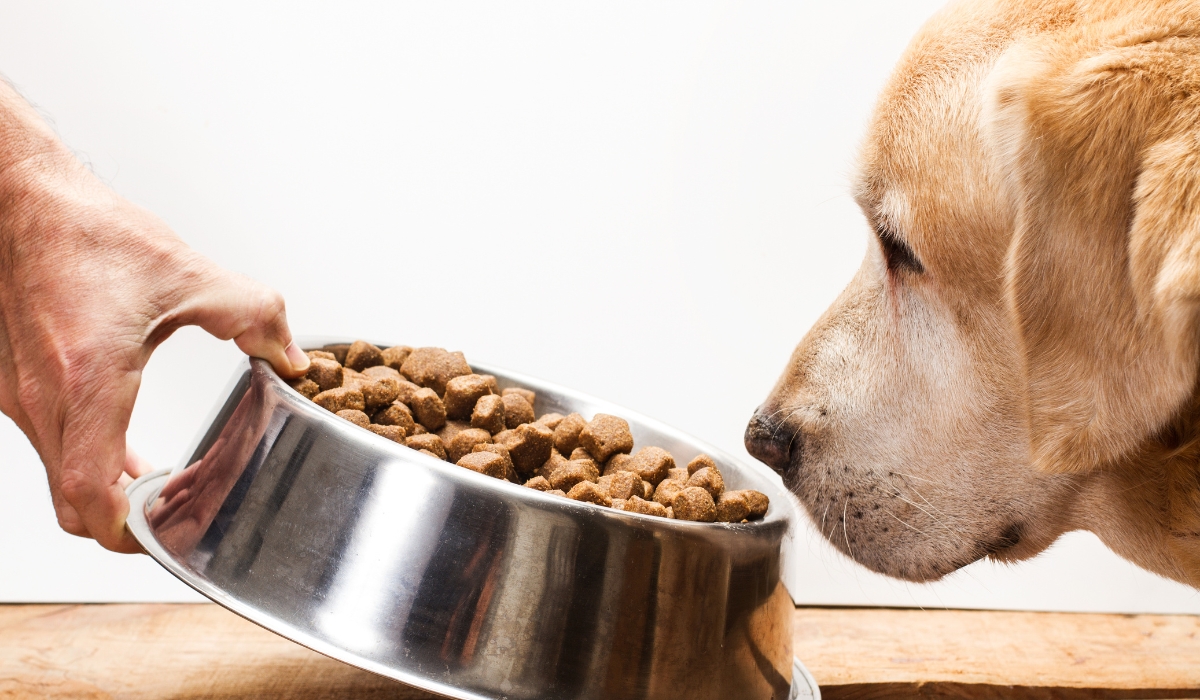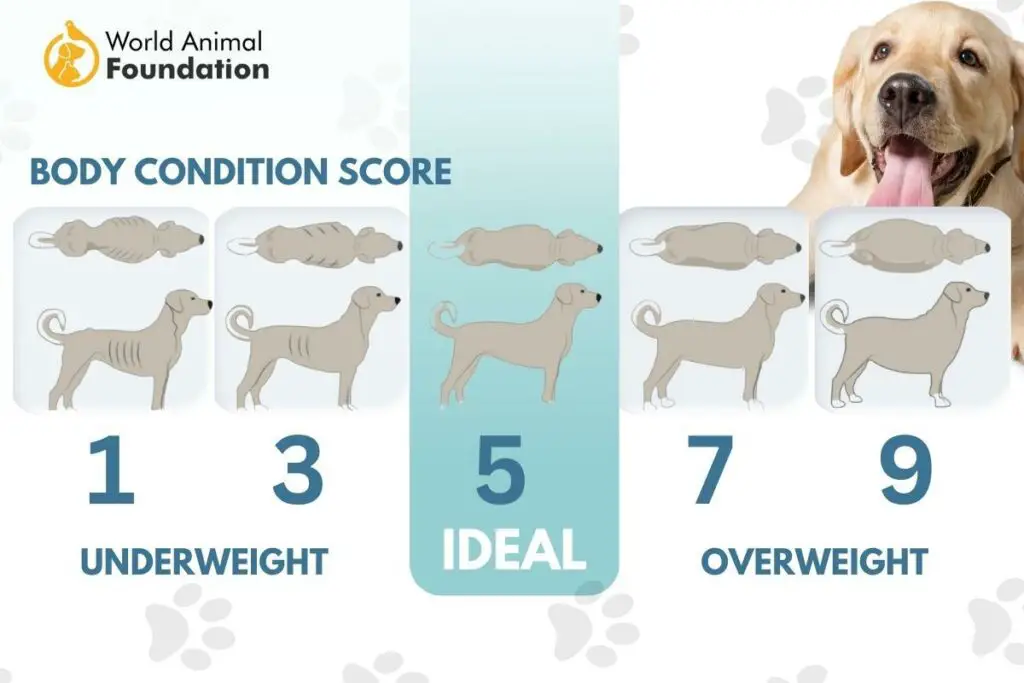Feeding your furry friend the right amount is crucial for their health and happiness. Overfeeding leads to obesity, while underfeeding can cause malnutrition. Our Dog Food Calculator takes the guesswork out of mealtime. Simply input your dog’s breed, age, activity level, and weight, and we’ll calculate their daily caloric needs. Ensure your dog thrives with a personalized feeding plan, promoting a healthy weight, shiny coat, and boundless energy. Stop wondering, start knowing – calculate your dog’s ideal calorie intake today!
Disclaimer:The calculations and information provided by these tools are for educational purposes only and not a substitute for professional advice. Always consult a qualified expert before making any decisions based on these tools’ results.
Every dog is unique, and determining the perfect feeding amount may require some adjustments. Our Dog Food Calculator is designed to offer an excellent starting point, providing you with the right guidance to ensure your dog’s nutritional needs are met.
Use this calculator on your site!
Powered by World Animal Foundation
Copy Embed Code
Instructions
1. Copy the code above.
2. Add it to your post/page where you want to show the calculator.
3. Change the size using the iframe’s width and height if needed.
4. You must provide credit to use the calculator.
Guidelines to Use Dog Food Calculator
Good quality food is essential for dogs as it ensures proper nutrition, maintains a healthy weight, boosts energy, promotes a healthy coat, and contributes to overall longevity and well-being. Investing in premium dog food is an investment in your furry friend’s health and happiness.
However, feeding the right amount of food is equally crucial as choosing the right food for your dog. Research has proven that maintaining dogs at their ideal weight significantly enhances their health and can even prolong their life.
Please note that the Dog Food Calculator is exclusively designed for adult dogs and puppies. Additionally, it is not suitable for pregnant or lactating females.
- For puppy and adult dogs
Puppies experience rapid growth and development, which demands higher energy and nutrient intake to support healthy bone, muscle, and organ growth. On the other hand, adult dogs have stabilized growth and energy requirements.
- For senior dogs
As dogs age, their energy needs decrease, making weight gain more likely. Small to medium dogs are typically considered seniors around seven years old, while large or giant breeds can reach senior status as early as five years old. Senior dogs have lower calorie needs but higher protein requirements.
- Weight
The amount of food a dog requires is largely dependent on their body weight. Larger dogs generally require more calories than smaller dogs due to their higher metabolic rate and energy expenditure.
Explore our Dog BMI Calculator to delve deeper into your furry friend’s body mass index and learn if your dog’s body weight is within the expected range.
- Activity Level
Dogs with higher activity levels, such as those that are very active or working dogs, require more calories to support their energy expenditure. On the other hand, less active or sedentary dogs have lower caloric requirements.
When using the dog food calculator, you will be prompted to select your dog’s activity level. Please make sure you select the closest option that best describes your dog’s lifestyle.
Body Condition Score (BCS)
The BCS is a subjective assessment of a dog’s body condition, indicating whether they are underweight, overweight, or at an ideal weight.
Dogs with a BCS indicating they are underweight may require more calories to support weight gain and improve body condition. On the other hand, dogs with a BCS indicating they are overweight dogs may need fewer calories to facilitate weight loss and reach a healthier body condition.
Converting Calories to Portion Size
Although we provide an estimate for calories per day along with the serving size or number of cups per day for your convenience to schedule your pet’s daily intake.
However, converting calories to portion size is super easy as it involves determining the number of calories present in a specific serving or portion of dog food. To achieve this, follow these steps:
1. Input your dog’s weight, age, activity level, and other relevant details into the dog food calculator to calculate their daily caloric needs (MER).
2. Check the calorie content per serving on the dog food packaging. It is usually listed on the label in kcal (kilocalories) per cup or per gram.
3. Divide the calculated daily caloric needs (MER) by the calorie content per serving. This will give you the number of servings (cups or grams) your dog should consume per day to meet their energy requirements.
By converting calories to portion size, you can accurately measure and provide the appropriate amount of dog’s food meals to keep your dog healthy and satisfied while maintaining their ideal weight.
Formula to Calculate Dog Food Calories
To maintain a healthy weight, dogs’ energy (calorie) needs depend on various factors. Our dog food calculator utilizes the following formulas to estimate your dog’s daily resting calories (RER) and overall calories (MER) needs:
First, we calculate the Resting Energy Requirements (RER), which include essential body functions like digestion, respiration, heart, and brain activities.
To determine resting calorie needs (RER) for your dog, use the following formula:
RER [cal/day] = 70 x (weight [kg])^0.75
Once we calculate the RER, we multiply it by specific factor to estimate your dog’s total daily energy needs (MER):
MER [cal/day] = RER x factor
It’s important to understand that individual pet needs may vary from the calculated values, so consider these as starting points for dog’s food estimation. Adjust the amount as necessary to maintain a healthy body condition score for your furry companion.
How to Keep Your Dog at an Ideal Weight
Keeping your dog at an ideal weight is essential for their overall health and welfare. Here are some tips to help you achieve and maintain their ideal weight:
1. Balanced Diet: Feed your dog a well-balanced diet with appropriate portions to meet their nutritional needs without overfeeding.
2. Regular Exercise: Engage your dog in regular physical activity that matches their age, breed, and energy level. Daily walks, playtime, and interactive games can help keep them active and maintain a healthy weight.
3. Guidance for treats: Ensure treats make up no more than 10% of your dog’s total daily calorie intake. Treats should be given in moderation, and consider healthier options like fruits or vegetables.
4. Monitor Weight: Regularly weigh your dog and keep track of their weight to ensure they stay within the ideal range.
5. Consult Your Veterinarian: If you’re unsure about your dog’s ideal weight or nutritional needs, consult your veterinarian for personalized guidance.
6. Avoid Table Scraps: Refrain from sharing human food with your dog, as it can lead to unhealthy weight gain and other health issues.
Note: Let’s not forget that chocolates can be toxic to dogs, and even a small amount can be dangerous! Learn more in our dog Chocolate Toxicity Calculator to keep your furry friend safe and informed.
7. Monitor Food Labels: Check food labels for calorie content and serving sizes, and choose a high-quality dry food appropriate for your dog’s age and size.
By following these guidelines and being mindful of your dog’s diet and activity level, you can help them achieve and maintain a healthy weight, leading to a happier and longer life together.
Importance of Calculating Food Quantity for Your Dog
Calculating the quantity for your dog’s food is crucial for maintaining their weight, overall health, and nutritional balance. It helps prevent issues like obesity or malnutrition, promotes cost-effective feeding, and prevents health problems related to improper diet.
Consistent monitoring of food quantity also allows you to detect changes in their eating habits, ensuring a long and healthy life for your beloved pet.
As previously mentioned, these figures serve as a starting point, but due to individual differences, finding the right food amount for your dog may need some adjustment through trial and error.
Remember, dogs’ nutritional requirements evolve over time, so it’s essential to regularly reassess and ensure your dog’s well-being. Stay observant and flexible to meet your furry companion’s changing needs.
FAQs
How much should a dog eat based on his weight?
There is no one-size-fits-all answer to this question. For small dogs up to twenty pounds, the recommended daily food intake is between three-quarters and one-and-one-half cups. For medium breeds weighing around thirty to fifty pounds, the ideal portion ranges from one-and-three-fourths cups to two-and-two-thirds cups of dry food per day.
How can I know if I am feeding my dog enough?
To know if you’re feeding your dog enough, observe their body condition and behavior. As a general rule, feel their ribs; they should be easily felt without excessive fat. A good energy level, steady weight, and firm stools are positive signs. Consult a veterinarian for personalized guidance based on your dog’s age, size, and activity level to ensure they receive the right amount of food for optimal health.
Conclusion
As passionate animal advocates, we embrace the responsibility of educating and supporting our pet-owner community, providing valuable insights into nutrition and best feeding practices.
Once you determine the right amount and calories for your dog’s food, you’re on track to providing them with the nourishment they need to stay fit and healthy.
And if you want to know your dog’s age in human years, visit our Dog Age Calculator! Unveil their true age today!
A dog food calorie calculator is a crucial tool for responsible pet ownership. By considering factors like breed, age, activity level, and ideal weight, these calculators provide a tailored estimate of your dog’s daily caloric needs. This information empowers owners to make informed decisions about portion sizes and prevent overfeeding or underfeeding, ultimately contributing to a healthier, happier, and longer life for their canine companions. Remember to consult with your veterinarian to discuss your dog’s individual needs and adjust feeding plans accordingly.


